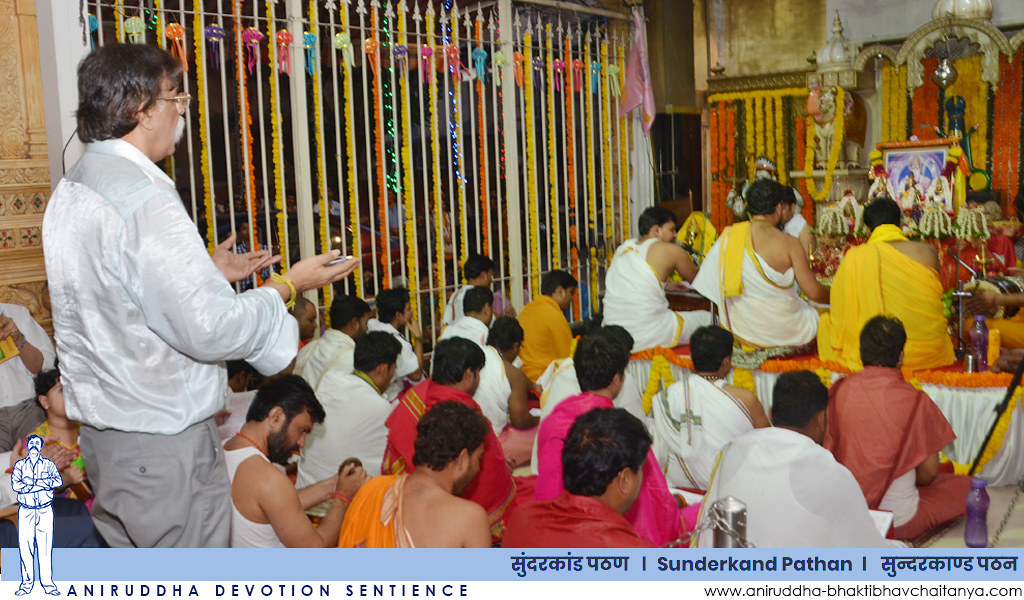Overview
Sunderkand is a book that holds great significance in Hindu mythology. It is a chapter from the epic Ramayana, written by the sage Valmiki. The chapter narrates the adventures of Lord Hanuman, who is on a mission to find and rescue Lord Rama’s wife, Sita, who has been abducted by the demon king Ravana. Sunderkand is considered to be a sacred text and is recited by devotees to seek blessings and protection. It is believed that reading Sunderkand can bring positivity, courage, and spiritual enlightenment. The book is filled with important teachings and life lessons that can guide individuals on their spiritual journey. It emphasizes the power of devotion, loyalty, and selflessness. Sunderkand is a testament to the unwavering faith and determination of Lord Hanuman, who overcomes numerous obstacles in his quest to serve Lord Rama. Overall, Sunderkand is a captivating and inspiring chapter that showcases the triumph of good over evil.
Historical Background

Origins of Sunderkand
The origins of Sunderkand can be traced back to ancient Hindu scriptures. It is a chapter from the epic Ramayana, which is one of the most revered texts in Hinduism. Sunderkand narrates the journey of Hanuman, the monkey god, to Lanka in search of Sita, Lord Rama’s wife. The chapter is filled with significant events and teachings that hold great spiritual and moral value. It highlights the unwavering devotion of Hanuman towards Lord Rama and serves as a source of inspiration for devotees. To learn more about Sunderkand, you can find an Odia Sunderkand PDF that provides a comprehensive understanding of the chapter.
Significance in Hindu Mythology
The Sunderkand is a significant chapter in the Hindu epic Ramayana. It is believed to be written by sage Valmiki and is dedicated to Lord Hanuman. The chapter narrates the journey of Hanuman to Lanka in search of Sita, the wife of Lord Rama, who had been abducted by the demon king Ravana. The Sunderkand holds great importance in Hindu mythology as it highlights the devotion, strength, and courage of Hanuman. It showcases his unwavering loyalty towards Lord Rama and his determination to fulfill his duty. This chapter also emphasizes the power of faith and the triumph of good over evil. The Sunderkand is often recited or chanted by devotees to seek blessings, protection, and success in their endeavors.
Historical Events related to Sunderkand
Sunderkand is a significant chapter in the epic Ramayana, which narrates the journey of Lord Hanuman to Lanka in search of Sita, the wife of Lord Rama. It is believed to be written by the sage Valmiki and is considered a sacred text by Hindus. The historical events related to Sunderkand are of great importance as they provide insights into the rich cultural and religious heritage of India. One of the key events is the burning of Lanka by Hanuman, which symbolizes the triumph of good over evil. Another important event is the meeting between Hanuman and Sita, where Hanuman delivers Lord Rama’s message of love and reassurance. These events showcase the bravery, devotion, and loyalty of Hanuman towards Lord Rama and serve as a source of inspiration for millions of devotees around the world.
Content and Structure

Description of Characters
The Sunderkand is a chapter from the Indian epic, the Ramayana. It is a significant part of Hindu scripture and is revered for its teachings and lessons. The chapter focuses on the journey of Hanuman, the monkey god, to find and rescue Sita, the wife of Lord Rama. Throughout the Sunderkand, several important characters are introduced, each with their unique qualities and contributions to the story. These characters include Hanuman, the brave and devoted servant of Lord Rama; Sita, the virtuous and loyal wife of Lord Rama; and Ravana, the powerful demon king who has abducted Sita. Each character plays a crucial role in shaping the narrative and conveying important messages about devotion, righteousness, and the power of good over evil.
Plot of Sunderkand
The plot of Sunderkand revolves around the journey of Lord Hanuman to Lanka in search of Goddess Sita. It is believed to be the most important part of the Indian epic Ramayana. Sunderkand is known for its vivid description of Lord Hanuman’s adventures, his encounters with various characters, and his ultimate success in finding and meeting Goddess Sita. This chapter showcases Lord Hanuman’s unwavering devotion, courage, and intelligence in overcoming obstacles and fulfilling his mission. The story of Sunderkand is filled with significant events and teachings that continue to inspire and guide people to this day.
Key Teachings and Lessons
The Sunderkand is a chapter in the epic Ramayana, which is revered as one of the greatest Hindu scriptures. It is a narration of the journey of Lord Hanuman to Lanka in search of Sita, the wife of Lord Rama. The chapter is filled with key teachings and lessons that hold great significance in Hindu philosophy. One of the key teachings of Sunderkand is the importance of devotion and unwavering faith. Lord Hanuman’s unwavering devotion to Lord Rama is a testament to the power of faith and the rewards it brings. Another important teaching is the power of perseverance and determination. Lord Hanuman’s relentless efforts to find Sita and bring her back to Lord Rama showcase the importance of never giving up, no matter how challenging the circumstances may be. Additionally, Sunderkand teaches the value of selflessness and humility. Lord Hanuman’s selfless act of helping Lord Rama without expecting anything in return serves as a reminder to always prioritize the well-being of others above our own. These key teachings and lessons from Sunderkand continue to inspire and guide individuals in their spiritual journey.
Symbolism and Allegory

Symbolic Interpretations
In the epic Ramayana, Sunderkand holds great significance as it is a chapter that showcases the bravery and devotion of Hanuman. Symbolic interpretations of Sunderkand provide deeper insights into the teachings of this sacred text. One of the key symbolic interpretations is the representation of Hanuman as the embodiment of unwavering faith and loyalty. His unwavering dedication to Lord Rama symbolizes the importance of devotion and surrender in one’s spiritual journey. Additionally, Sunderkand also symbolizes the power of perseverance and determination in overcoming obstacles. Through his relentless efforts to find Sita and bring her back to Lord Rama, Hanuman teaches us the importance of never giving up in the face of adversity. Overall, the symbolic interpretations of Sunderkand offer valuable lessons on faith, devotion, and perseverance that can be applied to our own lives.
Allegorical Meanings
The Sunderkand is a chapter in the epic Ramayana, which is considered one of the greatest Indian epics. It is a collection of verses that describes the journey of Lord Hanuman to Lanka in search of Sita, the wife of Lord Rama. The Sunderkand is known for its allegorical meanings, which provide deeper insights into the teachings of the Ramayana. The chapter explores themes of devotion, courage, and the triumph of good over evil. The lyrics of the Sunderkand are revered by devotees and are often recited or sung as a form of prayer. By understanding the allegorical meanings of the Sunderkand, one can gain a deeper understanding of the spiritual teachings embedded in the Ramayana.
Relevance in Modern Context
The teachings of Sunderkand hold great relevance in the modern context. Sunderkand, a chapter from the epic Ramayana written by sage Valmiki, is a sacred text that is widely revered in India. It is particularly significant in the state of Odisha, where it is considered a part of the daily religious practices. The recitation of Sunderkand is believed to bring peace, prosperity, and protection from evil forces. It is also recited to seek blessings for success, good health, and overall well-being. The importance of Sunderkand is further emphasized by its association with the holy plant Tulsi, which is considered dear to Lord Ram. The teachings of Sunderkand promote virtues such as devotion, courage, righteousness, and the power of good over evil. In the modern context, these teachings can guide individuals to lead a righteous and purposeful life, and to overcome challenges with determination and faith.
Devotional Practices

Recitation and Chanting
Recitation and chanting play a crucial role in the practice of Sunderkand. The recitation of Sunderkand is believed to bring peace, prosperity, and spiritual upliftment. It is often performed in temples, during religious ceremonies, and in the homes of devotees. Chanting the verses of Sunderkand is considered a powerful way to connect with Lord Hanuman and seek his blessings. The rhythmic recitation of the sacred text creates a serene atmosphere and helps in focusing the mind. The practice of reciting and chanting Sunderkand is not only a form of devotion but also a means to gain inner strength and overcome obstacles in life. It is recommended to recite and chant Sunderkand with utmost devotion and sincerity, as it is believed to have transformative effects on the spiritual journey.
Sunderkand Path
Sunderkand is a significant part of the Hindu epic Ramayana. It is a chapter that focuses on the adventures of Lord Hanuman. Sunderkand Path is a devotional practice where devotees recite the chapter of Sunderkand with utmost devotion and reverence. This practice is believed to bring blessings, courage, and inner strength to the devotees. The teachings of Sunderkand emphasize the importance of faith, devotion, and selflessness. It teaches us to have unwavering faith in the divine and to always be ready to serve others selflessly. The path of Sunderkand is not only a religious practice but also a spiritual journey that connects the devotee with the divine energy. By reciting Sunderkand, one can experience a sense of peace, tranquility, and divine presence. It is a powerful tool for spiritual growth and self-realization.
Devotional Significance
The devotional significance of Sunderkand lies in its profound teachings and spiritual wisdom. It serves as a guide for devotees seeking spiritual enlightenment and a deeper understanding of Lord Hanuman’s devotion and loyalty towards Lord Rama. Sunderkand highlights the importance of unwavering faith, perseverance, and selflessness. It teaches us the power of devotion and the ability to overcome obstacles through dedication and determination. This sacred scripture also emphasizes the significance of surrendering to the divine will and trusting in the higher power. Through its verses, Sunderkand instills a sense of devotion, courage, and righteousness in the hearts of its readers, inspiring them to lead a virtuous and meaningful life.
Impact and Influence

Sunderkand in Literature and Arts
Sunderkand in Literature and Arts
Understanding the spiritual significance of Sunderkand is crucial in exploring its impact on literature and arts. Sunderkand, a chapter from the Indian epic Ramayana, holds deep-rooted cultural and religious importance. It narrates the journey of Lord Hanuman to find Devi Sita, the wife of Lord Rama, who had been abducted by the demon king Ravana. The teachings of Sunderkand have inspired numerous literary works, including poems, songs, and plays. Artists have also depicted scenes from Sunderkand through paintings, sculptures, and dance performances. By delving into the profound meaning of Sunderkand, one can gain a deeper understanding of its influence on various forms of artistic expression.
Influence on Spiritual Practices
The teachings of Sunderkand have a profound influence on spiritual practices. It is believed that reciting the Sunderkand can bring immense peace and tranquility to the mind and soul. The story of Sunderkand revolves around the heroic deeds of Lord Rama, who is considered the epitome of righteousness and virtue. Lord Rama’s journey to find his wife Sita and his encounter with various challenges and obstacles serve as a source of inspiration for spiritual seekers. The teachings of Sunderkand emphasize the importance of devotion, perseverance, and faith in overcoming difficulties in life. Through the recitation of Sunderkand, devotees seek to connect with the divine energy of Lord Rama and experience spiritual transformation. The profound teachings of Sunderkand continue to guide and inspire individuals on their spiritual journey.
Popular Culture References
Sunderkand, one of the most revered chapters of the Indian epic Ramayana, has made its way into popular culture in various forms. From movies and television shows to music albums and literature, the teachings and stories of Sunderkand have captured the imagination of people worldwide. The profound spiritual journey of Lord Hanuman and his unwavering devotion to Lord Rama have become iconic symbols of faith and devotion. The popularity of Sunderkand in popular culture is a testament to its timeless wisdom and universal appeal.
Author Profile

Latest entries
- 28 June 2025BlogHow to Choose the Best High-Yield Savings Account with 5%+ Interest in India (2025 Guide)
- 28 December 2024BlogTop 6 Employee Management Software for Small Businesses
- 19 December 2024BlogShri Hanuman Chalisa in Hindi Text with English Translation
- 7 August 2024BlogTop 13 Online Master of Social Work Programs

